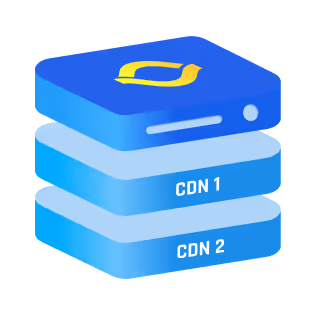Time to Live (TTL) is a concept that not only forms the backbone of network communication but also plays an important role in web content delivery.
Think of Time to Live as the digital equivalent of the 'best before' date stamped on perishable items, like your favorite bag of chips.
You wouldn’t want to munch on stale chips, would you? Similarly, in the online world, TTL ensures the data you interact with is fresh and relevant.
What is Time to Live?
Time to Live (TTL) is a digital mechanism that sets an expiration timer on data packets traversing a network, as well as on cached web content.
When you send an email, load a website, or stream the latest episode of a hit series, know that TTL operates stealthily in the background. You can think of it as a countdown timer that tells the network or cache system, “Hey, this data has a shelf life. Use it before it’s too late!”
Visualize a world where data packets had no expiration date. Without TTL, data packets would loop endlessly between routers, leading to severe network congestion
It would be like having cars on the road with no destination, clogging up highways forever. In web content delivery, incorrect TTL settings could serve you outdated or irrelevant information. That’s pretty much identical to reading yesterday’s news when you’re looking for the latest updates–that’s a TTL misconfiguration for you.
{{cool-component}}
How does TTL Impact Performance?
The efficient setting of TTL values is paramount for optimal online performance. An overly aggressive TTL, which expires too quickly, can lead to frequent data fetching and increased load times, while a lax TTL can serve stale or outdated content to users.
Similarly, in web content delivery, the right balance ensures users get the most recent version of the web content while minimizing the server's workload and bandwidth consumption.
The TTL Mechanism: How Does it Work?
In the web content delivery context, when a web asset like an image or a JavaScript file is cached—either on your browser or on a Content Delivery Network (CDN) edge server—it’s tagged with a TTL value. This value dictates how long the asset will stay in the cache before it’s considered stale and is either removed or refreshed.
“If-Modified-Since” Header and 304 HTTP Return Code
While TTL plays a significant role, it's not the sole mechanism that ensures the web content you engage with remains current. If a browser has previously cached a web asset and it's expired, the browser can forward a request to the server using the "If-Modified-Since" header. This header specifies the date and time the browser last acquired the asset.
In response, the server checks if the asset has been updated since that date. If it hasn’t, the server sends back a 304 HTTP return code, which means “Not Modified”. This tells the browser that its cached version is still valid, and there’s no need to download the asset again. On the other hand, if the asset has been updated, the server sends the new version to the browser.
Cache Control Headers
Alongside TTL and the "If-Modified-Since" header, Cache Control headers play a crucial role in web caching. These headers, sent by web servers, provide directives to browsers and CDNs on how to cache certain resources.
For instance, a "max-age" directive specifies how long a resource can be cached before checking for an updated version. By effectively using Cache Control headers, developers have finer control over caching behavior, allowing for improved user experience and efficient server resource utilization.
Here are some CCH examples:
- max-age=[seconds]: Specifies the maximum amount of time a resource will be considered fresh. After this time, a revalidation will occur.
- no-cache: Forces caches to submit the request to the origin server for validation before releasing a cached copy.
- no-store: Instructs caches not to store a copy of the resource under any circumstances.
- must-revalidate: Tells caches that they must obey any freshness information you give them about a representation. Caches cannot use the response past its expiration without first checking with the server.
Now, think for a second; you’ve got a fridge full of groceries. Some items, like fresh produce, have a shorter “TTL,” while canned goods might have a longer one. Your fridge (the cache) needs to know when to toss the old lettuce and bring in the fresh spinach. Quite a futuristic fridge, but that’s precisely what TTL does in a caching contest–it keeps your digital fridge well-stocked with fresh content.
{{cool-component}}
Customizing TTL for Enhanced Performance
This is the playground of tech-savvy and the detail-oriented. When it comes to Time to Live (TTL), an all-in-one approach just won’t cut it.
Different types of data and content require different TTL settings for optimal performance. Here’s how you can tweak these TTL settings to turn your website into a high-performance machine.
You're juggling various types of content—images, CSS files, JavaScript libraries, HTML documents—and each has its unique characteristics.
For instance, a CSS file that rarely changes could have a high TTL value, say, a month. In contrast, a news article that updates frequently should have a much lower TTL value, perhaps as low as a few minutes.
Here, you can also use advanced CDN features to automate TTL settings. Some modern CDNs employ machine learning algorithms to analyze your content's characteristics and dynamically adjust the TTL. It's like having a personal chef who knows exactly how long to marinate each type of meat in your gourmet dish.
TTL in the Web Content Delivery Process
Now let's connect the dots and examine how TTL fits into the bigger picture of web content delivery.
To understand this, we need to look at two critical components: Browser Caching and CDN Caching.
Browser Caching
The browser cache is like your personal mini-library. It stores web assets that you frequently access so that the next time you visit a webpage, the browser can quickly load these assets from the local cache.
The TTL value here specifies how long these assets remain in your library before they are considered outdated and replaced with new editions.
The Time to Live (TTL) value acts as the 'expiry date' for these stored assets. It determines how long these items remain in your digital library before they're deemed outdated and replaced. An overly extended TTL might result in viewing obsolete content, while a very short TTL could lead to frequent asset re-fetching, causing slower load times. It's essential to strike a balance to ensure an optimal individual user experience.
CDN Caching
Content Delivery Networks (CDNs) serve as the global distribution hubs of the digital world. They store copies of your website's assets on servers, often termed as 'edge' servers, scattered around the world, ensuring content is delivered closer to the end-user. When a user accesses a website, the content is swiftly served from the nearest CDN server.
The TTL (Time to Live) settings play a pivotal role in this process. It defines how long a specific asset remains on the edge server before checking back with the primary (origin) server for potential updates. A well-optimized CDN Caching TTL ensures that users globally receive up-to-date content promptly, while also reducing the strain on the origin server.
A poorly configured TTL, on the other hand, may result in outdated content delivery or place undue load on the origin server due to excessive refreshes.
Dynamic TTL with CDN Rules & Edge Workers
Static “one-size-fits-all” TTLs rarely match the complexity of modern sites. Most enterprise CDNs now let you compute the TTL on-the-fly; either with rule-engine policies or lightweight edge-compute scripts (Workers, Functions, EdgeWorkers).
The result is a dynamic TTL that adapts to the request context in real time.
Here’s how it works in practice:
- Request arrives at the edge.
The rule engine or worker inspects headers, cookies, query-strings, device type, or even API keys. - Business logic sets freshness.
Based on that inspection, the code assigns a custom max-age (or s-maxage) value to the response, or rewrites cache-control headers before the asset is stored. - Edge cache honors custom TTL.
Each object now lives just long enough; minimizing stale risk while still maximizing hit ratio.
Dynamic TTLs combine the raw speed of caching with the agility of edge logic; so every byte stays fresh just long enough and no longer. Common rule patterns include:
Conclusion
In essence, TTL is the conductor of the web content delivery orchestra, ensuring each component—be it browser cache or CDN—plays its part at the right time and for the right duration. Fail to configure TTL correctly, and you risk turning your symphony into a cacophony.
FAQs
Why is TTL critical for ensuring data freshness and preventing outdated or stale content?
The time-to-live (TTL) value is a freshness timer. When it hits zero, cached objects are immediately revalidated or replaced, ensuring users never see outdated images, prices, or scripts. By forcing periodic refreshes, time to live TTL prevents stale assets from lingering indefinitely and keeps data trustworthy.
How does TTL help optimize server workload, bandwidth consumption, and user experience?
Because a smart TTL model lets heavy, rarely changing assets live at the edge while transient items expire quickly, the origin only serves what truly needs rebuilding. That trims server CPU cycles, shrinks bandwidth bills, and translates into snappier page loads; an immediate, visible gain in user experience.
How does TTL impact browser caching and CDN edge caching for websites?
Browsers honour the same timer locally, and CDN edge nodes honour it globally. If a copy’s TTL expired in transit, the client or edge silently re-queries the origin, guaranteeing that both layers consistently serve the freshest possible resource.
When should you use a short TTL versus a long TTL for different web assets?
Assign a short TTL to fast-changing APIs or flash-sale banners, but grant style sheets, font files, and hashed JavaScript bundles a long window; hours to months. Likewise, a low TTL time-to-live DNS value aids rapid IP or routing changes, whereas a higher setting stabilizes record lookups and reduces resolver load.
What are the best practices for configuring TTL values for optimal web performance?
Audit cache-hit ratios monthly: lift TTLs on stable assets until hits plateau, then prune overly aggressive settings that jeopardize freshness. Combine ETag or If-Modified-Since validators with reasonable TTLs, and automate purge hooks in deployment pipelines so critical fixes can bypass caches instantly without global invalidations.



.png)
.png)
.png)






